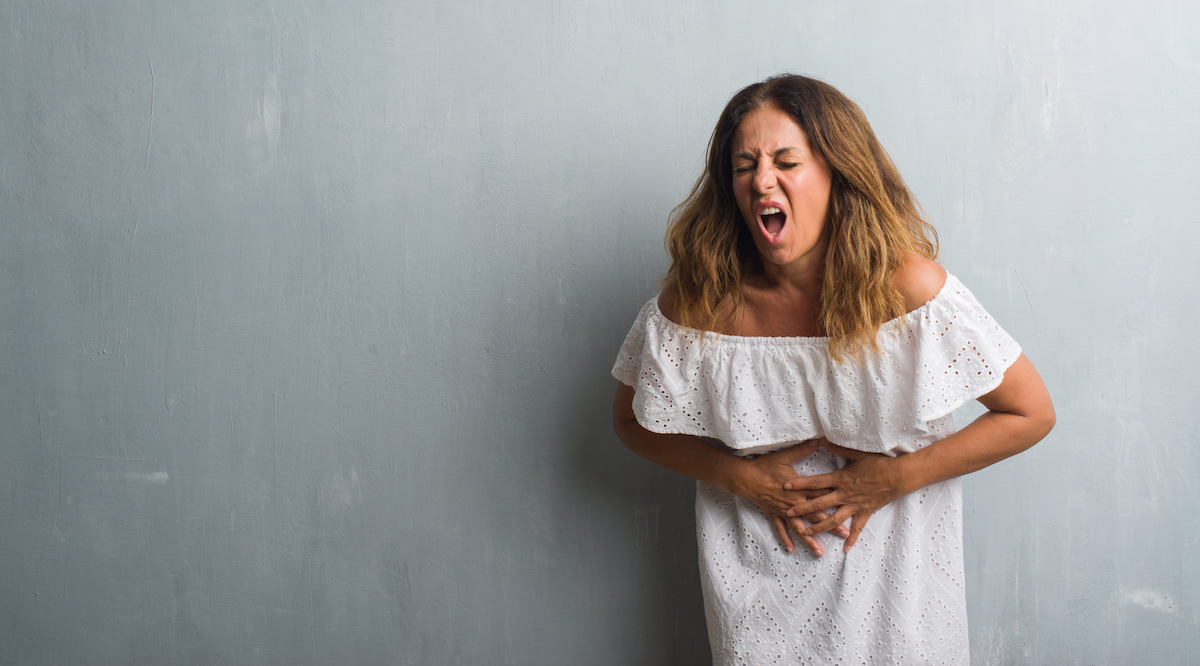
Pain in your lower left abdomen is a hallmark of this surprisingly common condition.
If you’re 40 or older, there’s a good chance you have a common condition in your digestive tract known as diverticulosis, and you may not even be aware of it. However, when diverticulosis leads to diverticulitis, you’re likely to take note.
Diverticulosis, diverticulitis: What are they and what’s the difference?
Diverticulitis begins with diverticulosis, which occurs when small pouches form in your large intestine, or colon. You’re more likely to develop diverticulosis after the age of 40, and by the age of 60, about half of all people have it.
Most of the time, diverticulosis doesn’t cause any further harm, and you probably won’t even know you have it, unless it’s diagnosed during another procedure, like a colonoscopy. But for up to 5% of people who have diverticulosis, it develops into diverticulitis.
“Diverticulitis occurs when there’s an inflammation or infection in these balloon-like sacs in the colon, called diverticula,” according to Sang W. Lee, MD, a colorectal surgeon with Keck Medicine of USC.
What causes them?
Although the specific causes are still being researched, Dr. Lee explains that diverticulosis is thought to be related to a diet low in fiber.
Fiber helps keep the stools soft, so without it, you may become constipated. The combination of hard stools and straining may cause spasms of the colon.
“The spasms can then lead to high pressure on certain areas of the colon,” Dr. Lee says, “causing sacs to develop in the weak areas.”
For people who go on to develop diverticulitis, gender appears to play a role, with women more at risk for developing it after the age of 50 than men. Other risk factors for diverticulitis include:
- Smoking
- Obesity
- A diet high in red meat, fats and refined grains
- Lack of exercise
- Certain medications, including non-steroidal, anti-inflammatory drugs
- Genetics
What are the symptoms of diverticulitis?
“People with diverticulitis typically experience pain and tenderness on the left side of the lower abdomen,” Dr. Lee explains. “In more severe cases, the pain may be accompanied by fever and chills.”
The pain may come on suddenly and be mild at first but then increase gradually over a few days. If left untreated, diverticulitis may lead to complications, such as diverticular bleeding, abscess or perforation of the colon — a serious complication in which the contents of your bowel can leak into your abdomen.
How is diverticulitis diagnosed and treated?
To determine the cause of your symptoms, your doctor will perform a physical exam that may include checking your abdomen for tenderness and will ask you about your diet, bowel movements and lifestyle habits. You may also have imaging tests, including a CT scan or barium enema. Your doctor may also order a colonoscopy to get a full picture of your intestine.
If you’re diagnosed with diverticulitis, Dr. Lee notes that a liquid diet and anti-inflammatory medication can be effective treatments.
“In more severe cases, oral or intravenous antibiotics may help,” he says. “But, if you have complex diverticulitis or repeated attacks, you may require one or more surgeries.”
The good news for people who need surgery: It’s often possible to undergo minimally invasive procedures, Dr. Lee adds.
Topics
